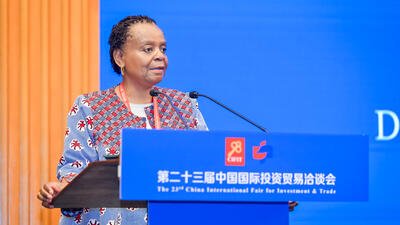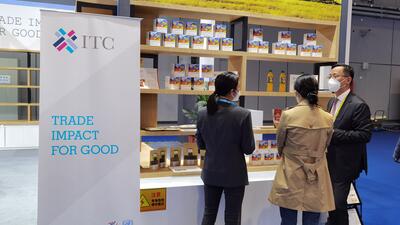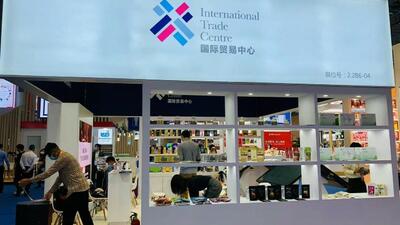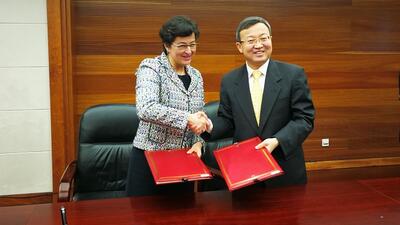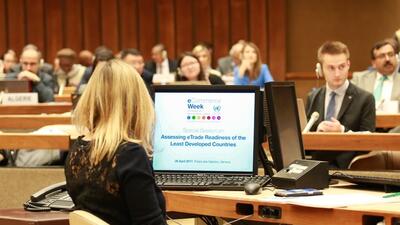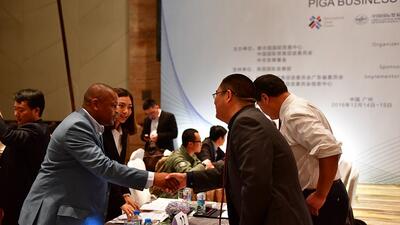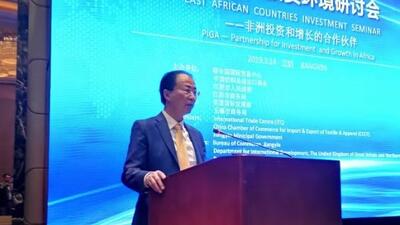

Critical mass for a critical message: Empower women, power procurement
INTRODUCTION
It has taken several centuries for laws to change in ways that support women’s equal right to lead countries and corporations – to the benefit of the global economy. The positive correlation between gender equality and the level of competitiveness, GDP per capita and a country’s Human Development Index is an oft-quoted finding of the World Economic Forum’s Gender Gap Report. This should be a compelling enough reason for leaders to want to tackle the most egregious areas of inequality, such as women’s lack of access to markets, and related factors such as finance and skills building. The rewards can be huge: within the Asia Pacific Economic Cooperation (APEC) alone, as profiled in this issue, an estimated US$ 42 billion to US$ 46 billion could be added to the GDP of the 21 member economies annually.
All governments, corporations and institutions – including non-government organizations – buy goods and services, from office stationery to cleaning services. Organizations need to be asking: what proportions of these expenditures are directed to women-owned companies?
Spending is typically funnelled through procurement. Government procurement is a key element in the GDP of many developing countries. And corporate procurement is at the core of the global economy: Fortune 500 companies alone spend in excess of US$ 700 billion each year on procured goods and services. Approximately 1% of this goes to women-owned businesses, according to WEConnect International. This is not because women vendors don’t exist; it’s an issue of process. Lack of knowledge about procurement processes, including how and where tenders are advertised and how to respond, has inhibited women’s access to procurement markets.
ITC is working with partners to address this gap.
International Trade Forum readers are encouraged to get involved in this issue by joining the ITC Platform for Action on Sourcing from Women Vendors at www.intracen.org/womenandtrade. As a buyer, seller or institution working to build the capacity to trade, members commit to, inter alia:
• Sourcing competitive products and services from women vendors
• Sharing knowledge on policies and practices to increase sourcing from women vendors
• Supporting, initiating or improving efforts to integrate women vendors into value chains.
Platform members are the first to receive the application form for the annual Women Vendors Exhibition and Forum – the 2011 meeting is profiled in this edition of InternationalTrade Forum. As a further encouragement to governments, ITC organized the inaugural Government Procurement Roundtable on Sourcing from Women Vendors in Geneva during the December WTO Ministerial, a meeting placing a strong emphasis on how to get women business owners into the bidding process.
Women Vendors Exhibition and Forum:New strategies for inclusion
There are two main roadblocks to increasing women’s share of international procurement, though neither is easy to address. First, women entrepreneurs who want to sell their products or services to multinational corporations (MNCs) often do not know what, precisely, MNCs require. Second, although many MNCs are eager to procure from women vendors, they do not have the means to find them – particularly in countries where the government lacks statistics on women-owned businesses. Even when the buyers and sellers do connect, the sellers may need technical assistance to meet the requirements of international corporations.
The first Women Vendors Exhibition and Forum (WVEF) was held in Chongqing, China in September 2010, initiating a 10-year strategy to address these barriers. The forum was hosted by ITC, the Chongqing Municipal Government, the Chongqing Foreign Trade and Economic Relations Commission, and WEConnect International, and was organized in partnership with the China Association of Women Entrepreneurs, the International Federation of Business and Professional Women, the International Women’s Coffee Alliance, SPINNA and Quantum Leaps. UK AID and the Norwegian Ministry of Foreign Affairs supported the forum.
The event was part of the strategy of the Global Platform for Action on Sourcing from Women Vendors, which was formed in September 2010. The goal of the platform is to increase the share of goods and services procured from women by corporate, government and institutional buyers. The common message from corporate members, which include Walmart, Accenture, Marriot International, Boeing and IBM, is that they need assistance in identifying the vendors in least developed and developing countries. They also said that many women-owned businesses would need various types of training to raise their products or services to international standards.
Attended by more than 250 women entrepreneurs, including over 100 from China, the WVEF also assembled representatives from 55 large corporations as well as trade support institutions, which are critical to skills training for women-owned enterprises.
Virginia Wong, CEO of Dun & Bradstreet China, gave the keynote address, and panel discussions included ‘Why Buy from Women Vendors: The Business and Development Cases’, during which H.E. Marlene Malahoo Forte, Minister of State for the government of Jamaica, spoke about her government’s commitment to sourcing from women.
‘We have to invest in women to alleviate poverty and to grow our economies, and one means is through trade,’ Malahoo Forte said. ‘Governments need to set the example by ensuring a certain percentage of procurement comes from women.’
Two half days were devoted to buyer mentor groups in seven areas: agribusiness, construction, automotive, information technology, textiles and apparel, coffee and trade facilitation. In these sessions, vendors had the opportunity to develop one-to-one relationships with buyers and hear about the process from their point of view. During the forum, companies committed to nearly US$ 15 million in transactions.
‘The next step is for ITC to work with its partners to enable these and other women business owners to meet buyers’ requirements,’ said Patricia Francis, Executive Director of ITC. ‘That capacity building could include training in areas such as meeting quality standards, meeting packaging and labelling requirements, or how to participate in a tender process.’
WVEF will take place again in 2012, continuing the long-term strategy for increasing the number of women, and women-owned businesses, in international trade. As Francis said, ‘Through the Platform, we can help liberate the powerful economic force that women represent, so they can take their equal place alongside men in the global economy.’
Business executivesfocus on procuring from women
The day before Women Vendors Exhibition and Forum opened, more than 30 business leaders, government officials and representatives from trade support institutions and women’s associations took part in the Third Senior Executive Roundtable on Sourcing from Women Vendors.
At the roundtable, ITC Executive Director Patricia Francis committed ITC to engaging with high-level government officials to explore ways to increase government procurement from women vendors, adding that ITC is making a commitment to facilitate an increase in the level of corporate spending on women from 1% to 7% within the Global Platform for Action on Sourcing from Women Vendors.
Wang Hong Hua, Deputy Party Chief for the People’s Party of Chongqing, and Professor Li Shirong, Deputy Director-General of the Chongqing Foreign Trade and Economic Relations Commission, welcomed the participants and presented their views on Chonqing’s entrepreneurial momentum.
Participants shared best practices and advice in overcoming barriers to best achieve the Global Platform for Action’s potential. And that potential is great, according to ITC’s Meg Jones. ‘ITC’s Women and Trade Programme has a membership of more than 30,000 women business owners, trade support institutions and, significantly, international corporations that spend more than $US 700 billion annually. Leveraging this group can have a tremendous impact on the global supply chain.’
Interview with Monique Ward, Accenture
Monique Ward, Accenture’s procurement lead for the Asia-Pacific region, began thinking about how her company could actively source products and services from women-owned businesses at the 2010 World Export Development Forum in Chongqing. ‘We are largely a services organization,’ says Ward, ‘so much of our purchasing is for things such as paper, technology and coffee for employees.’
One year later, at the Women Vendors Exhibition and Forum, Ward signed a letter of intent for Accenture to explore further opportunities with the International Women’s Coffee Alliance (IWCA). ‘It’s a first step in exploring what opportunities exist for Accenture to source coffee from the IWCA in Asia Pacific,’ says Ward. ‘There are still some hurdles to go through, but this gives us a starting point to how we can make it work.’
Accenture also signed a letter of intent, along with ITC and WEConnect International, to support the future building of capacity of the Self Employed Women’s Association of India (SEWA) to meet buyers’ requirements. The agreement stems from Accenture having placed an order for approximately US$ 1,700 with SEWA in a pilot sourcing of notepads produced from recycled paper collected by poor women.
Ward says Accenture’s Asia Pacific operations are also taking steps to actively source from women vendors, and that it is a business-driven decision: ‘World class procurement organizations are broadening their supply chains to include diversity requirements. It makes good business sense for a number of reasons: it taps into latent supply; it ensures agile suppliers as women-owned businesses are generally smaller and better able to adapt to changing market demands; and women-owned businesses are often more focused on environmental sustainability.’
Interview with Philip DeVliegher, Marriott International
Marriott International’s corporate philosophy supports supplier diversity. For the international hotel chain, it is an integral part of business strategy. ‘Finding women-owned businesses in developing countries is what proved to be the problem,’ says Philip DeVliegher, director of Global Supplier Diversity at Marriott. ‘It was WEConnect International that connected Marriott to ITC so that we could source from women suppliers outside the United States.’
ITC introduced Marriott to the International Women’s Coffee Alliance (IWCA), a close partner of ITC’s. The international hotel chain is now exploring the possibility of sourcing from women coffee growers in Africa and Latin America under the IWCA.
DeVliegher explains that the approach that Marriott takes is not a corporate social responsibility initiative. ‘It’s a procurement initiative, it’s a strategic sourcing initiative,’ he says. ‘Marriott wants the best products at competitive prices, and this is what we’re looking to explore.’




